Zero Waste and Fabric Economy
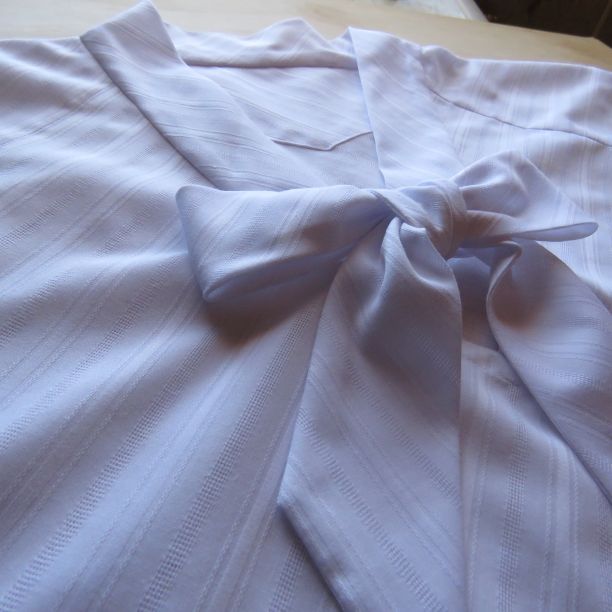
Sometimes I hear the throwaway line: zero waste patterns often use more fabric than regular patterns. Maybe that’s the person’s experience (or they’re repeating something they’ve heard), however, my own observations show the opposite.
Actually, I didn’t notice just how economical zero waste patterns could be until I’d made lots. Sometimes the fabric savings are huge, more than you could ever achieve with conventional patternmaking.
I’d go so far as to say that if there’s only one reason why a fashion brand should consider moving towards minimal or zero waste patterncutting, it’s the fabric savings (and therefore obviously the $$ savings).
Here’s an example of the savings to be had…
Behold, two blouses made by moi. The white one is the tie front blouse from the Zero Waste Sewing book, and the black spotty one I made circa 2017 to wear for an ASG talk.
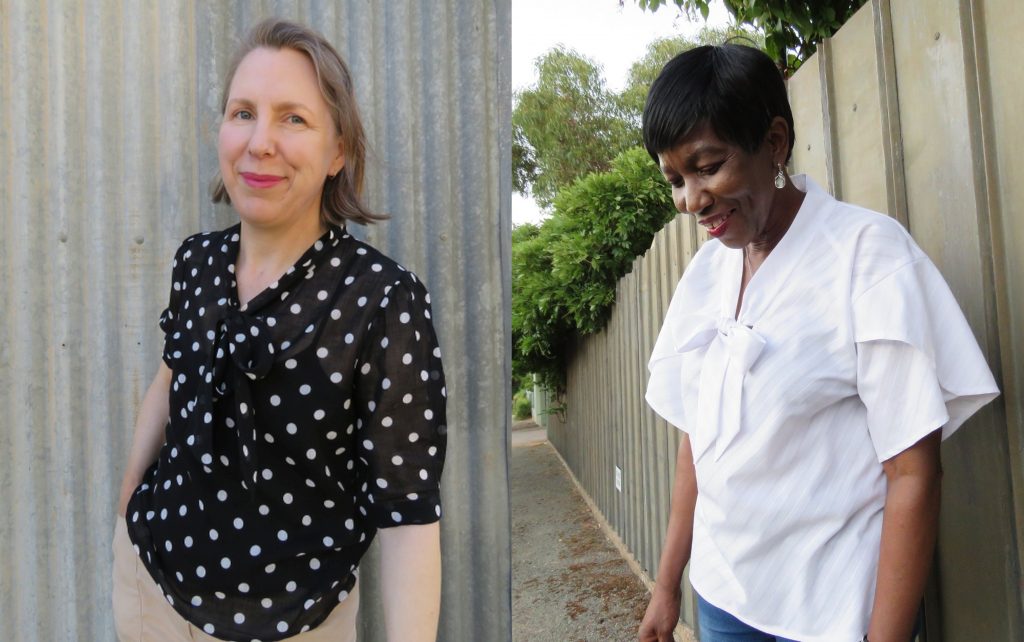
They both have a bow cut on the bias (the same width and length) and have short sleeves. The white blouse also has the body cut on the bias, is one size bigger than the spotty blouse and is 5cm longer (all things which should increase the amount of fabric required). So I’m not exactly comparing like with like, but the comparison is weighed against the zero waste blouse.

The white blouse uses exactly 115cm x 115cm of fabric, with this layout:

The spotty blouse was a pattern I got free with a sewing magazine.

The back of the envelope states that 160cm of 60″/150cm wide fabric is needed, but I definitely would have got it out of less, and I know I used a narrower fabric.
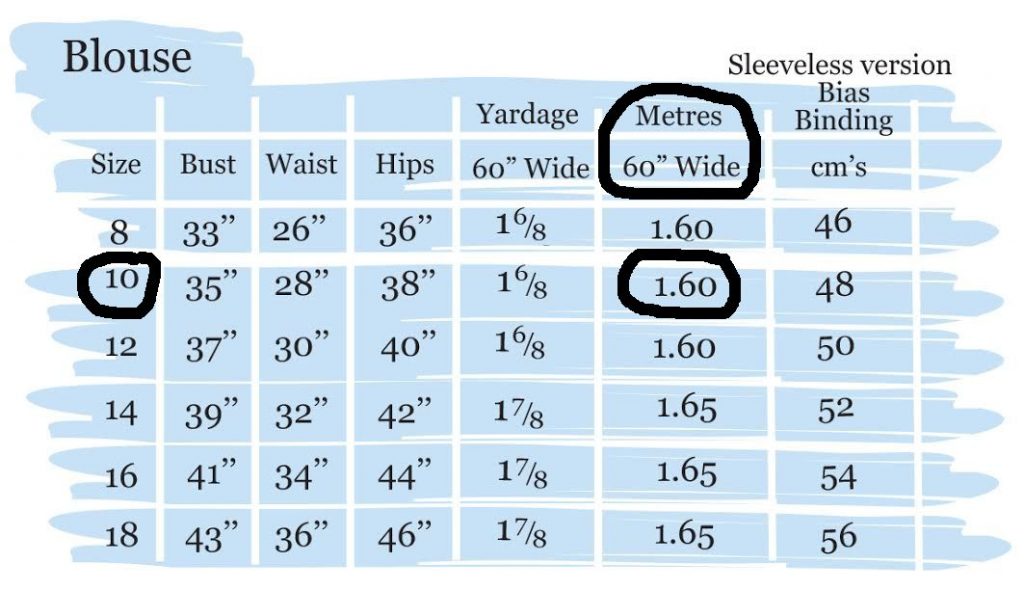
I tried quite a few arrangements (on 115cm wide fabric) to discover the smallest amount that would be required, trimming centimetres every time. I finally got to a “personal best” of 148cm.
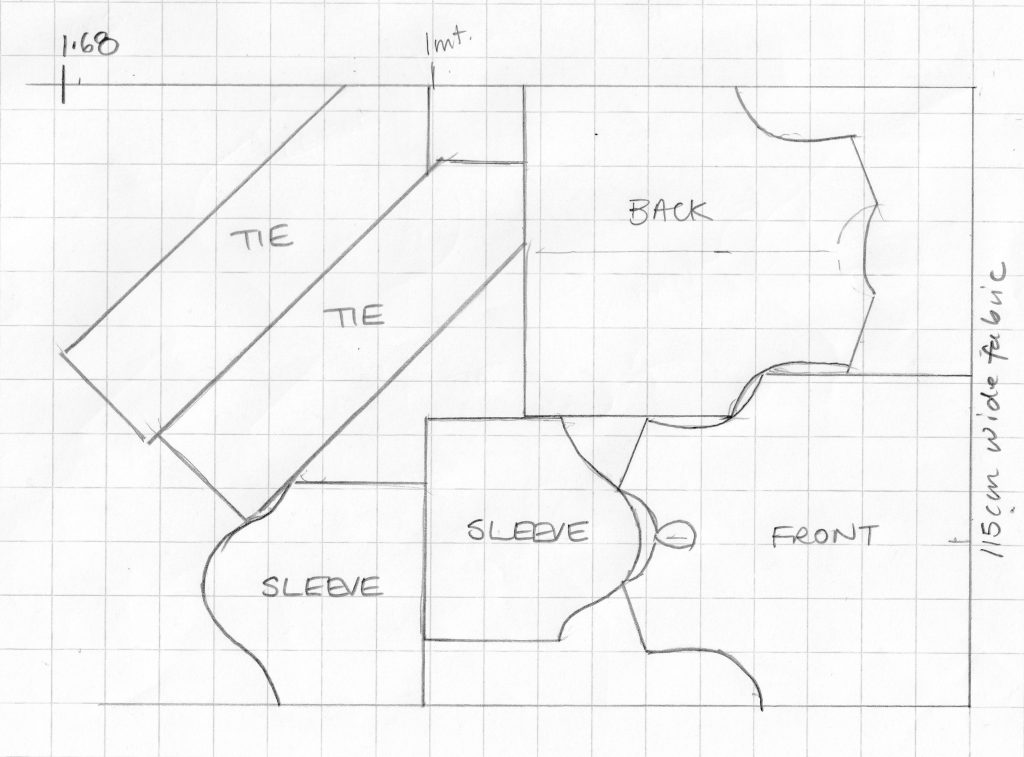
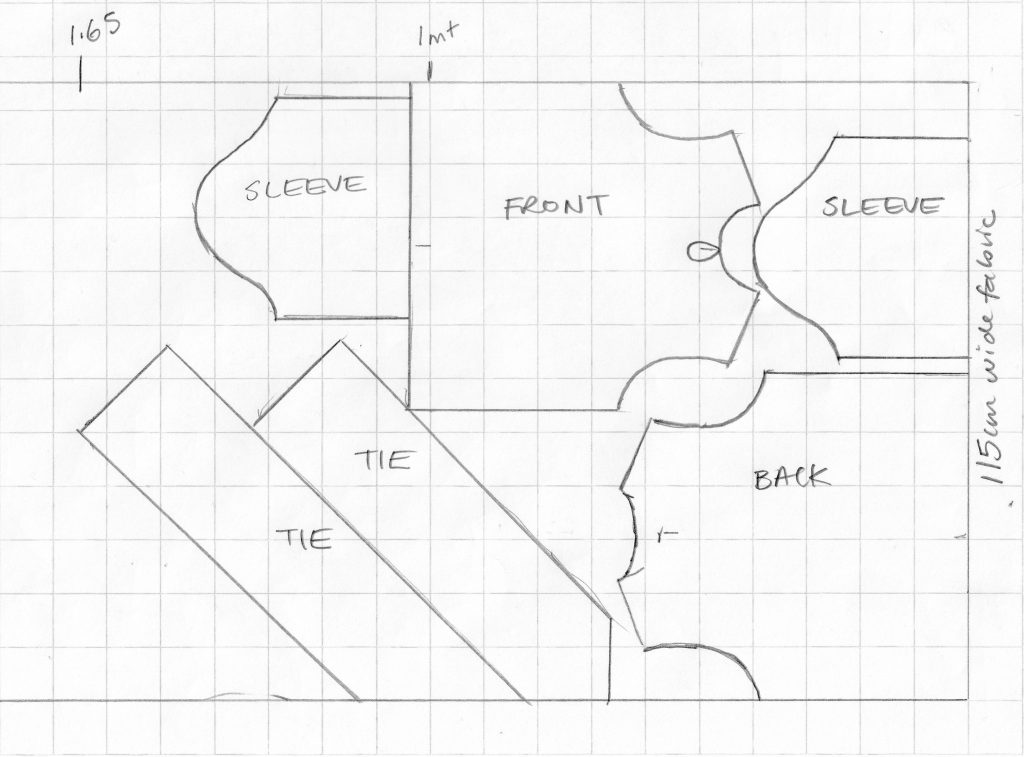
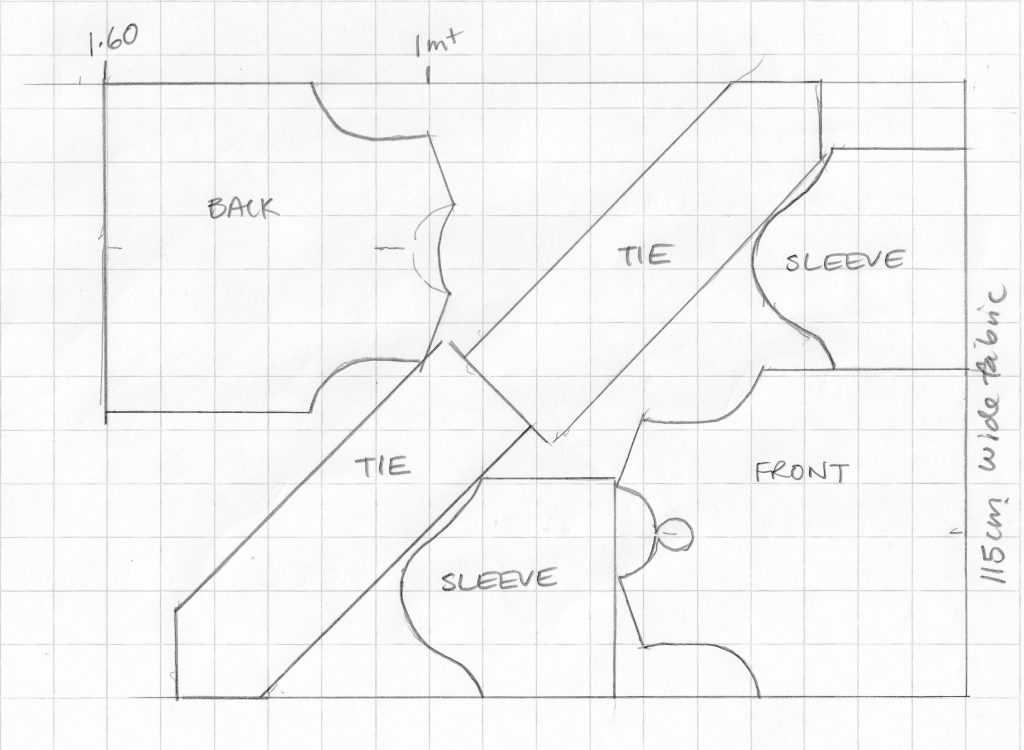
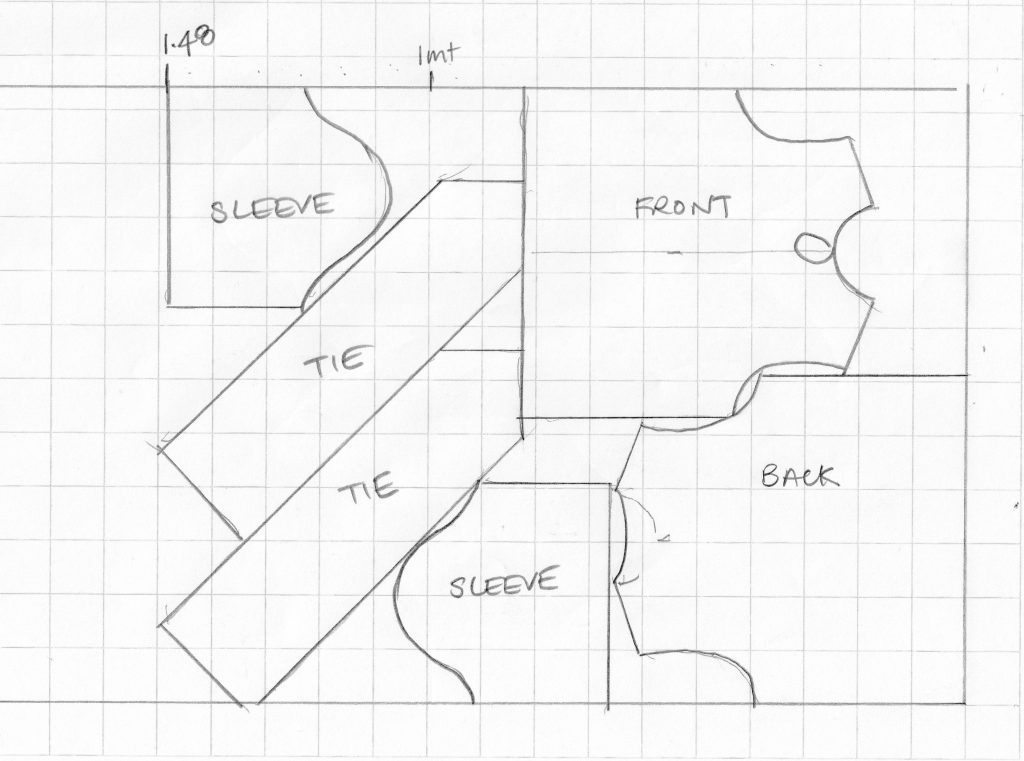
That’s 33cm above the zero waste blouse.
Then I tried marking out two spotty blouses and taking the average. This is often done in industry estimates but of course wouldn’t be done with a home sewing pattern.

I could get two in 280cm, so that’s 140cm per blouse. You can see I created a centre back seam to do this – sometimes tiny tweaks to the pattern can result in a better fabric yield.
I also tried marking out several body & sleeves separately from several ties and finding the average, but couldn’t beat 140cm.
So let’s call it 140cm for the spotty blouse and 115cm for the white one – I’m still knocking it out of the park with a 25cm difference, which is a 17.8% saving.
You only have to do a quick bit of maths to see how these kind of savings mount up. Eg If you cut 1000 blouses you would save 250m of fabric by cutting them zero waste, along with other associated savings: less freight costs because less rolls of fabric need to be ordered; less rubbish removal costs for fabric scraps; less cutting time because zero waste consists of shared lines rather than separate pieces.
This might be offset by the extra design/development time a zero waste pattern takes, and the time taken to sew together the extra pattern pieces that the zero waste blouse has, but the savings will still be considerable.
Cheers!
Dear Liz!
What a great and quotable post – Thanks for doing the math – so tired of hearing/reading „zero waste uses so much material“! Not thinking things through produces a lot of waste too.
Best, Giuls
Thanks for your affirmation, Giuls. I felt like I could give plenty more examples!
Wow, this is the sort of math I love.
Last night I began working on a new layout with a pattern that just would not fit on the chosen fabric. Thanks to the zero waste concept, I managed to fit every piece in.
Thanks so much for sharing!
Cheers, Traci – glad you got your pieces to fit.
I love this sort of maths too!
I’m doing the same calculations in my standard vs zero waste collection. All the info will be in my final report. I hear the same things about ZW using too much fabric. I think it’s the case that one or two large volume patterns in the ZW sector have made a big impact on people and have somehow come to represent ZW in general. The commenters don’t stop to realize that the same look using standard patterning techniques would take as much or more fabric.
Hi Chris, this post was actually inspired by your Instagram series.
I also have the same thoughts as you regarding some zero waste patterns which use a large amount of fabric but less than it would be as a standard pattern. Any long flowy gathered dress is going to use a considerable amount of fabric, regardless of whether it’s zero waste or not. The example that comes to mind is Birgitta Helmersson’s popular ZW Gather Dress, which uses 2.25m for every size up to a 46″ bust, compared to, say, Friday Pattern Company’s Wilder Gown, which uses 3.2m for the smallest size.
Great work, Liz. Love that you scaled it up to make the case for reconsidering cost assumptions on larger batches. Can scotch those throwaway lines that just end up supporting throwaway fashion. Also itching to try your origami shirt!
Cheers, Kerrie. Some large clothing brands such as Decathalon have gotten onto the benefits of minimal and zw patterns for fabric savings. The fashion industry has already screwed labour costs down as far as they can – I wonder if fabric will be the next cost saving?
Dedicated home sewer that I am, I would love the world to be saved one garment at a time, but change has to come at an industrial level. Inspiration and innovation comes from the margins (the selvage), but when conditions are right can sweep through entire systems. That’s why the work you and the ZWC is so important. Demonstrating the economic case matters. Love your work.
Cheers, Kerrie 🙂
I have many thoughts on this! I feel that technology is going to be a game-changer, as zero waste is really hard to do on existing patternmaking software. I think that this generation of fashion students could be the change-makers, but I can see that fashion institutions are in a tricky spot – they need to train people for jobs they can get now so that they’re employable, as well as what the fashion industry might be needing in the future. I also think that technical people (such as moi) have much to offer in how to make clothing more responsible.